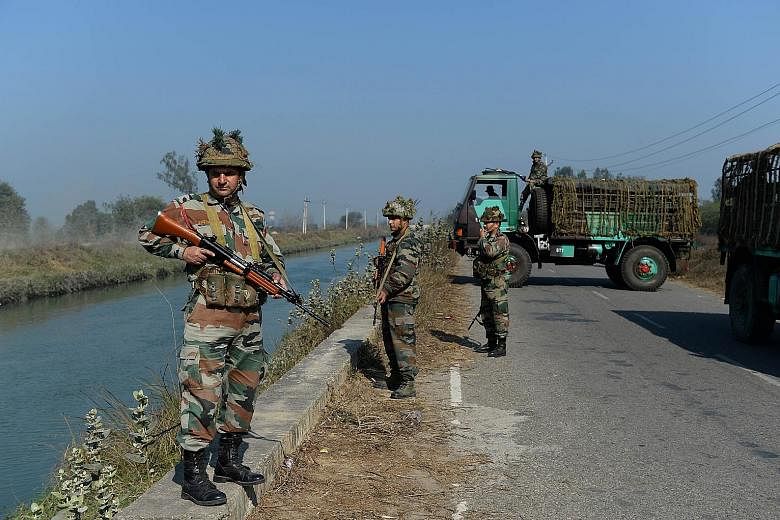NEW DELHI • Members of a rural Indian caste reached a deal late yesterday to end protests that paralysed the North Indian state of Haryana and cut water supplies to Delhi's 20 million residents, a protest leader and a police source said.
A Jat community leader said protesters had reached an accord with state and federal leaders and would clear road blockades and end their agitation, in which 19 people have been killed and more than 200 injured.
"The government has promised to meet our demands and we have promised our full cooperation," said Mr Ramesh Dalal, the convener of the Jat Arakshan Andolan (Jat Reservation Movement).
Mr Dalal said he had appealed to the entire Jat community, which makes up around a quarter of the population of Haryana, to return home after staging statewide protests to demand more government jobs and college places.
Another representative of the Jats, traditional farmers who make up the single largest community in the state with nearly eight million members, also said they had accepted the offer and would call off the protests completely.
"We have called off the agitation since the government agreed to all our demands. We are satisfied now and have faith the government will do its part," said Mr Yashpal Malik, the head of a group of Jat organisations.
-
HOT-BUTTON ISSUE
-
Deadly caste-based riots that erupted on Friday in the Indian state of Haryana have left 19 people dead. Here's a look at what makes such riots a regular occurrence in India.
INDIA'S CASTE SYSTEM
The caste system was a system of social stratification where birth defined a person's standing in society as well as occupation. The practice dates back thousands of years and has parallels in feudal Europe. While there are four broad categories under India's caste system, people are further sub-categorised into 3,000 castes and 25,000 sub-castes. The Jats are one such grouping traditionally involved in agriculture.
WHAT IS THE QUOTA SYSTEM?
Backward classes and castes in India are guaranteed a certain quota of government jobs and openings in educational institutes, besides tailor-made welfare programmes, as a form of affirmative action to enable them to integrate into the mainstream. However, people from upper castes often feel resentful, believing the reservations are at the expense of their well-being.
POLITICAL ANGST
The system is the subject of frequent challenges, with the number of places allocated to disadvantaged groups changing from state to state.
Politicians often promise to scale back the quota system, or to include a particular caste demanding inclusion, in order to win votes.
A senior police officer said that state leaders had persuaded the Jats to call off their protests. "Our challenge is to keep the law and order situation under control," the officer said, requesting anonymity due to the sensitivity of the matter.
Disruption due to the protests has been huge, with 850 trains cancelled, 500 factories closed and business losses estimated at US$2.9 billion (S$4.1 billion).
Much of New Delhi's water supply was cut off after the protesters sabotaged a canal that supplies three-fifths of Delhi's water.
India sent troops to secure the Munak Canal in Haryana after the protesters seized it on Saturday. By yesterday morning, the army had regained control and was assessing the damage. But with the water flow into the capital reduced, schools and many businesses remained shut and authorities urged people to ration water.
Delhi's water board said it had been forced to limit supplies to the city, which receives little rain and has long struggled to provide enough water for its rapidly growing population.
"There is extensive damage to the canal and it will take some time to fully restore the supply to Delhi," said water board spokesman Sanjam Cheema. "Engineers are working and hopefully the work will be completed by evening."
Thousands of troops had been deployed to Haryana on Saturday with orders to shoot on sight after week-long protests by members of the caste turned violent, with rioters setting fire to homes and railway stations and blocking highways.
Thousands of people and vehicles were stranded on the road after the protesters laid siege to the highways, cutting off road connectivity. Railway officials said restoration of train traffic could take some more time as the tracks will have to be repaired. The protesters had uprooted the tracks at various places.
REUTERS, AGENCE FRANCE-PRESSE, XINHUA

